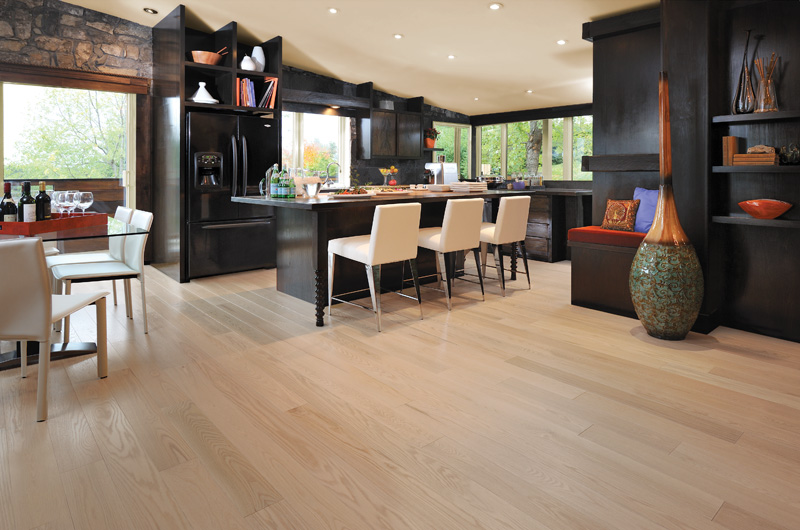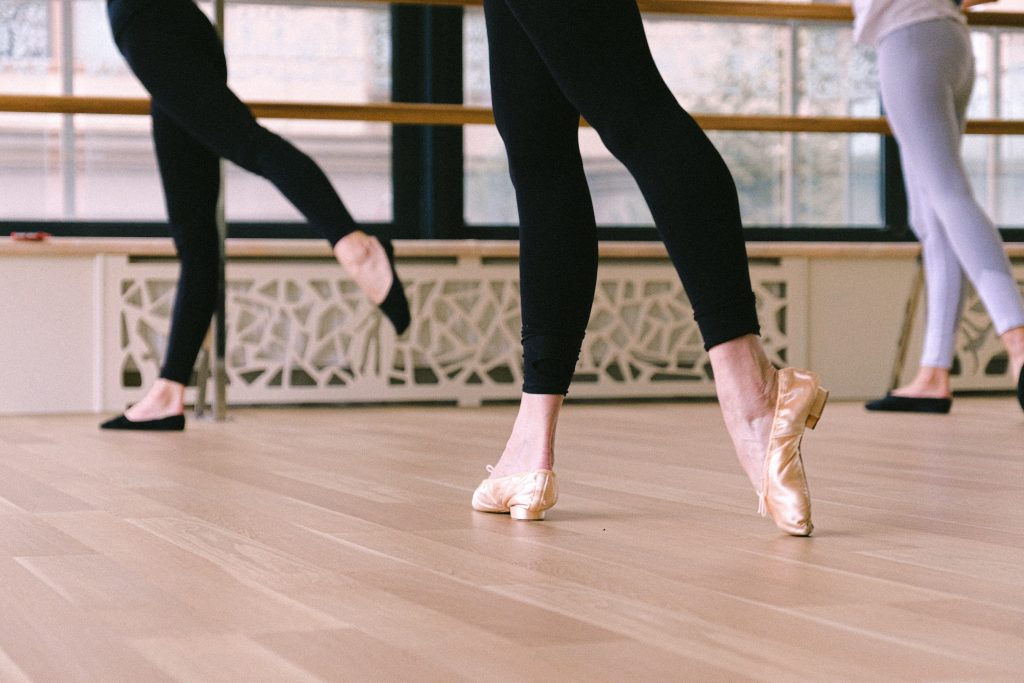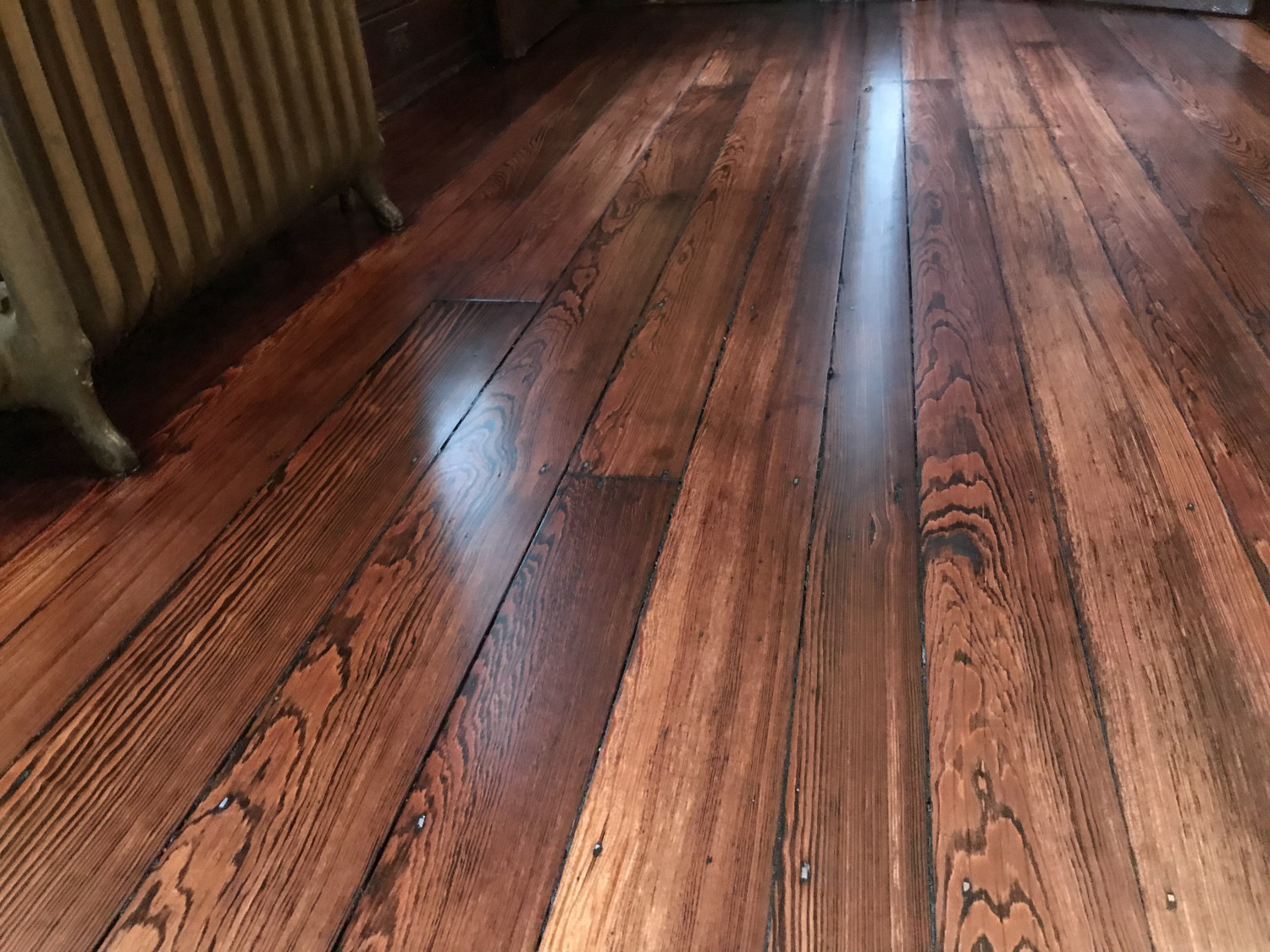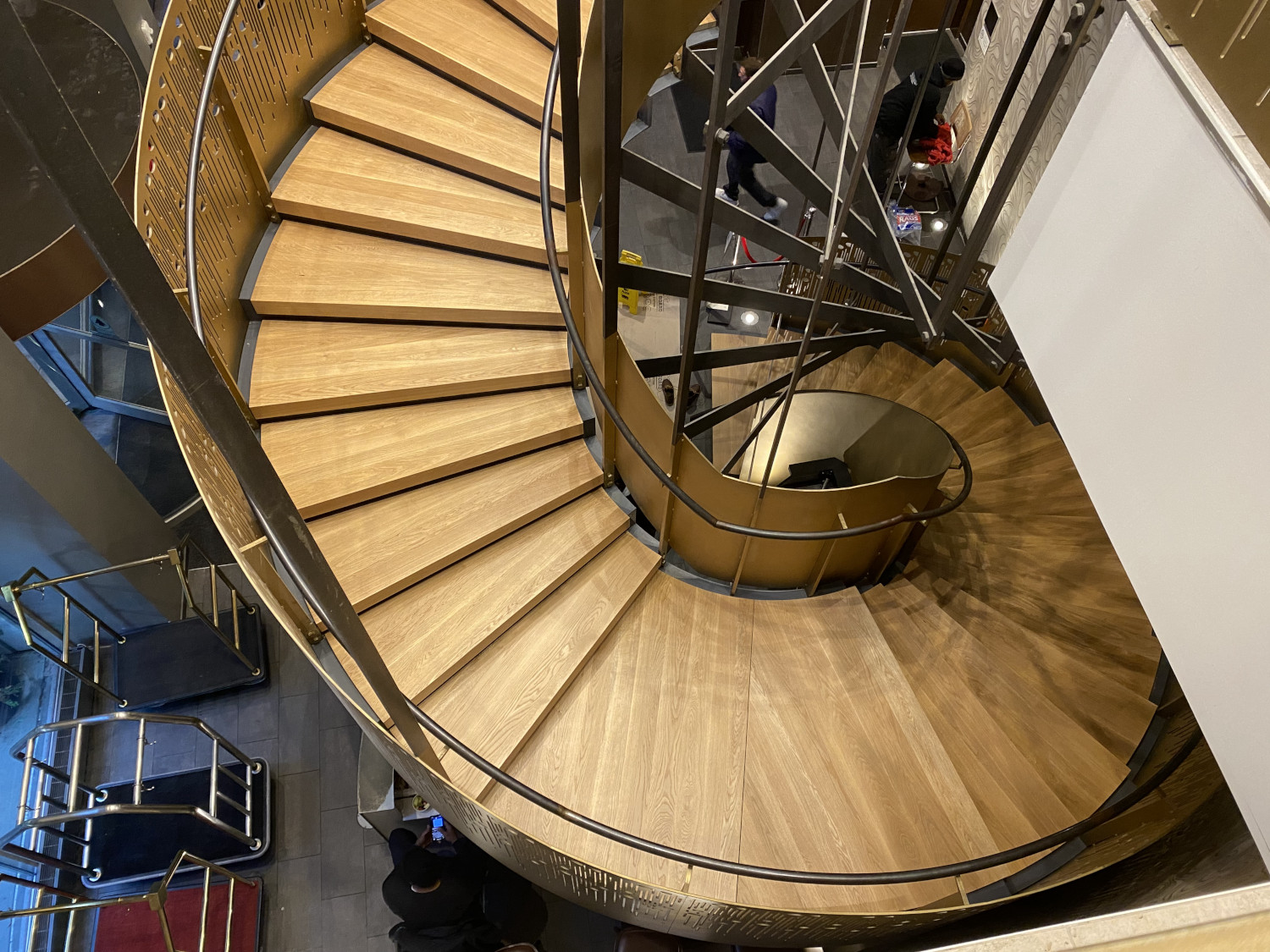The Pro's and Con's of White Oak Flooring: What You Need to Know
If you’re looking into the flooring market, a trend you may be clued in on is the growth in popularity of white oak hardwood flooring. While red oak hardwood is still more commonly used, white oak hardwood flooring is trending for a number of reasons. While both of these wood floor species are strong options for a home, they do have several differences that could make white oak the better option for you. As Philadelphia’s hardwood flooring experts, we’ll take a look at the pros and cons of white oak flooring when compared to other options for your floor.

What’s Good About White Oak Flooring
What’s great about white oak flooring is that it maintains many of the benefits of oak flooring while being unique. Since oak flooring is quite popular you should be able to find a large supply of it, keeping the price of wood floors a little lower than light woods of similar quality. When it comes to designing a room or space in your home, the light color of white oak means that you can find a large number of hardwood floors stain colors that suit it, from cool greys to warm chocolate.
Another clear benefit of white oak flooring is how stylish it is. The cool color of white oak lends itself to recent design trends, particularly the clean, modern look. They can also mesh well with a more rustic hardwood floors style, and white oak’s natural color makes it a great look for this look. However, if these styles aren’t for you, this kind of wood is very flexible design-wise. White oak naturally has less grain than some other oak varieties, meaning that it is easier to add aesthetics like texture or weathered finishes that can add a lot of character to a room.
Overall, oak varieties are stylistically versatile and lend themselves to a number of decor styles. Intalling white oak wood floor has the natural benefits of oak while also being easy to stain and transform to your desired style. It also lends itself to flexibility over time. If you end up wanting a new look down the line, white oak is easy to refinish.
What About Red Oak?
There are a number of benefits to white oak as opposed to red oak flooring. White oak has a greater density than red oak, meaning that it accepts a stain more readily. The grain is also generally straighter, creating a neater look that suits modern styles better. White oak’s density also gives it more durability and resistance to damage like denting. The density also makes white oak more stable, meaning it won’t warp as much and will resist rotting more, making it better for use outdoors.
Downsides to White Oak Flooring
As we’ve seen, white oak has a number of positive properties. Unfortunately, these properties do have a flip-side depending on what you’re looking for. One example is seen with the density of white oak. The high density gives the wood more durability, but makes it a bit harder to work with. Another example of a downside is that white oak is trendy, but red oak is still more common because there are more of them domestically and grow more quickly. This means that you can usually find red oak planks at a better price than white oak. The growing trend of white oak flooring also means that this option might not be as a unique wood floor as you want because it’s getting more popular, so if you want a really striking look a different style and wood variety may suit you better.

There are also downsides to white oak flooring that are inherent to using oak. When it comes to soundproofing, oak hardwood floors aren’t as successful as cork or carpet is. In general, hardwood floors can suffer from damage due to the surrounding environment. Things like temperature and humidity can make the wood warp, contract, and expand, causing your wood floor to creak and even crack if not cared for properly.
Despite some of these drawbacks, the durability and stylish look of white oak floors make them a great option for most homes.
White Oak Flooring Cost
When considering a flooring upgrade, one of the first questions that comes to mind is the cost. White oak flooring cost can vary significantly depending on several factors. These factors include the wood’s grade, the installation’s quality, and regional pricing differences. On average, you can expect to pay anywhere from $4 to $8 per square foot for white oak flooring materials in 2023. This range covers both solid white oak and engineered white oak flooring.
- Solid White Oak Flooring: Solid white oak flooring is made entirely from white oak wood and is known for its durability and longevity. Solid white oak flooring can range from $4 to $8 per square foot. Select or premium grades, which feature fewer imperfections and a more consistent appearance, tend to be on the higher end of this range. Rustic or character grades, with more knots and natural variations, are generally more affordable.
- Engineered White Oak Flooring: Engineered white oak flooring consists of a real white oak wood layer on top of a plywood base. It offers greater stability, making it suitable for areas with fluctuating humidity levels. Engineered white oak flooring typically costs $4 to $7 per square foot. It may be a bit more budget-friendly than solid white oak while still providing the beauty of real wood.
- Installation Costs: In addition to the cost of materials, you should factor in the installation cost. Labor costs for installing white oak flooring can vary by region and installer. Still, you can typically expect to pay around $2 to $3 per square foot for professional installation. Remember that if you opt for intricate hardwood floor patterns, inlays, or herringbone designs, the installation cost may be higher due to the additional labor involved.
Additional Costs: There are a few other expenses to consider when budgeting for your white oak flooring project. These may include underlayment, moisture barriers, adhesive, and finishing products like stains and sealants. It’s essential to account for these items to ensure a complete and accurate cost estimate.
Why Choose White Oak for Your Floors?
White oak is an attractive choice for flooring for various reasons.

Let’s explore some of the key advantages of using white oak as your flooring material:
- Durability: White oak is renowned for its durability and hardness. It has a Janka hardness rating of approximately 1360, which means it can withstand daily wear and tear, making it an excellent choice for high-traffic areas. This durability also makes white oak resistant to denting and damage.
- Stain Acceptance: White oak’s open grain structure and higher density allow it to accept stains and finishes exceptionally well. You can choose from a wide range of stain colors to achieve the desired look for your space, whether it’s a cool, contemporary aesthetic or a warm, classic vibe.
- Style Versatility: White oak’s light color and straight grain make it versatile in style. It can seamlessly blend into modern, rustic, or traditional interior designs. You can easily customize white oak with textures and finishes to match your decor preferences.
- Stability: White oak’s higher density and stability make it less prone to warping or rotting than other wood species. It’s also suitable for indoor and outdoor applications, adding to its versatility.
- Easy Refinishing: White oak is an excellent choice for those who like to keep their options open. If you ever decide to change the look of your floors, white oak can be easily refinished, allowing you to update the color or finish without replacing the entire flooring.
Is Maple or White Oak Better for Flooring?
Both maple wood floors and white oak wood floors are popular choices, each with advantages.
The choice between the two depends on your specific needs and preferences. Let’s compare maple and white oak for flooring to help you make an informed decision:
- Durability: White oak is known for its superior durability and hardness compared to maple. White oak has a higher Janka hardness rating, making it more resistant to dents and damage. White oak is the better choice if you’re looking for a flooring option that can withstand heavy foot traffic and potential wear and tear.
- Stain Acceptance: White oak’s open grain structure and higher density make it more receptive to stains and finishes. It allows for a broader range of color options and customization. If you desire a specific stain color for your floors, white oak provides greater flexibility in achieving your desired look.
- Style Versatility: Both maple and white oak offer style versatility, but white oak’s light color and straight grain make it particularly adaptable to various interior design aesthetics. It can complement modern, rustic, and traditional decor styles. Maple, while versatile, may have a slightly different appearance due to its fine and even grain pattern.
- Stability: White oak’s density contributes to its strength, making it less prone to warping or rotting. It is a suitable choice for both indoor and outdoor flooring applications. Maple is also stable but may require additional protection in outdoor settings.
- Maintenance: White oak is relatively easy to maintain, and its durability means it can withstand regular wear without extensive upkeep. While not difficult to maintain, maple may require more attention in high-traffic wood floor areas.
- Cost: The cost of maple and white oak flooring can vary. However, white oak is generally considered more cost-effective due to its durability and stain acceptance. Maple may be a bit more expensive, but the price difference depends on various factors, including grade and installation.
Ultimately, the choice between maple and white oak flooring depends on your needs, budget, and design preferences. White oak is an excellent choice if you prioritize durability, stain options, and style versatility. However, if you prefer the appearance of fine and even grain, maple may be more to your liking. Both woods have their merits, and the decision should align with your style, the space’s intended use, and your budget.
If you’re looking for more information on your flooring options then contact Artisan Wood Floors. Steve has more than two decades of experience in the wood flooring industry and his knowledgeable team has the expertise to make your dream home a reality. Install white oak wood floors in Philadelphia today and Call AWF at (215) 515-7355 – or contact us here to work on your new hardwood floor today.
Recent Hardwood Flooring Projects in Philadelphia & NJ




0 Comments